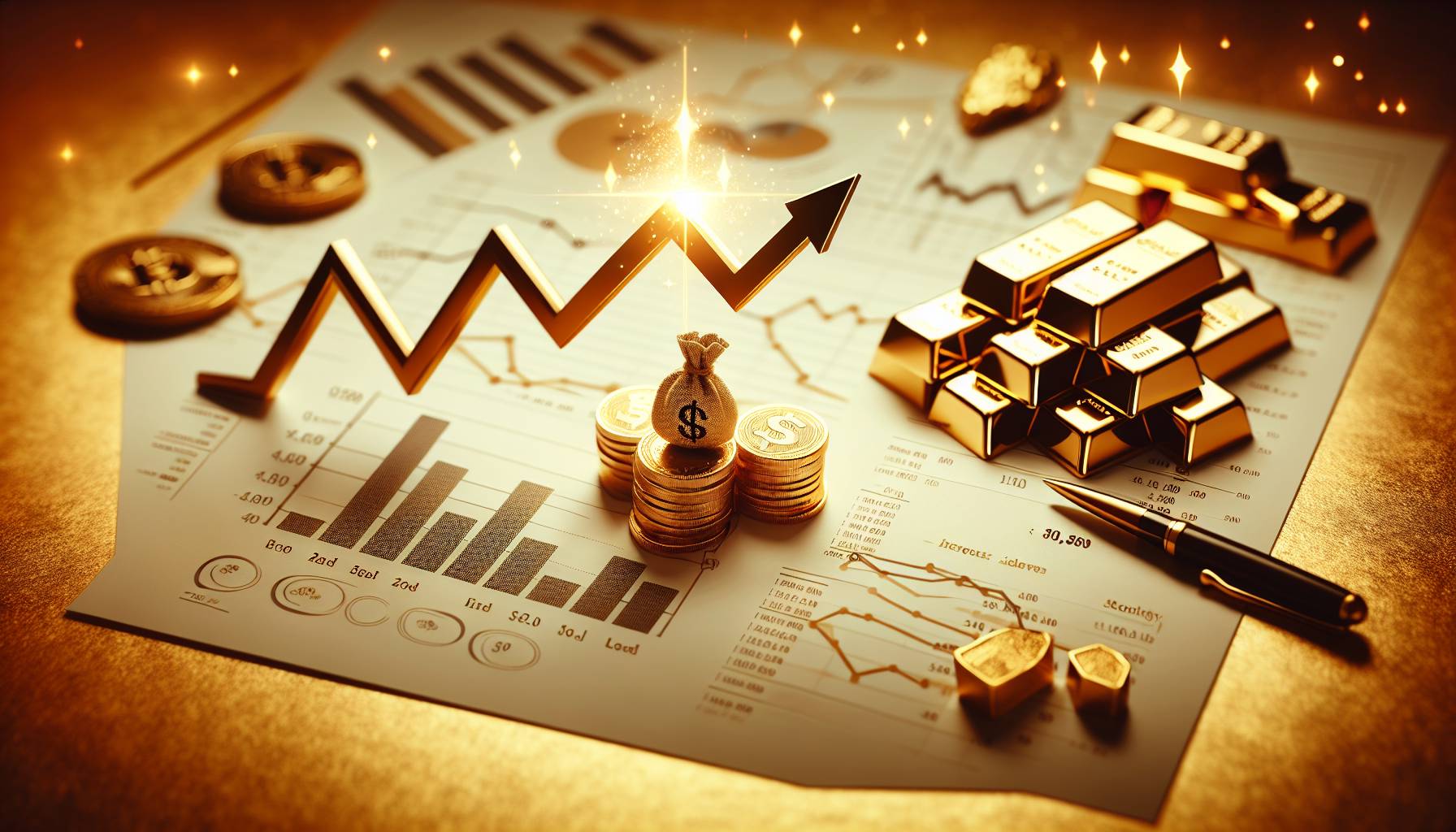Gold prices rebound amid tariff concerns
Gold prices have shown a notable recovery from a recent one-month low, driven by escalating concerns over impending tariff deadlines. As trade tensions between major economies intensify, investors are increasingly turning to gold as a safe-haven asset. This shift in market sentiment has bolstered gold’s appeal, leading to a resurgence in its value.
The looming tariff deadlines have created uncertainty in global markets, prompting a flight to safety among investors. Gold, traditionally viewed as a hedge against economic instability, has benefited from this trend. The metal’s price movements are closely watched by market participants, as they often reflect broader economic anxieties.
In the current climate, the interplay between trade policies and market reactions is critical. The anticipation of new tariffs has heightened volatility, with investors seeking refuge in assets perceived as more stable. This dynamic has contributed to the recent uptick in gold prices, underscoring the metal’s role as a barometer of economic sentiment.
As the deadline approaches, market analysts are closely monitoring developments in trade negotiations. Any shifts in policy or rhetoric could further influence gold’s trajectory, making it a focal point for investors navigating the complexities of the current economic landscape.
Copper market trends and analysis
The copper market has experienced a downturn, reflecting broader trends in industrial metals amid ongoing trade tensions. As a key component in manufacturing and construction, copper’s price movements are often seen as an indicator of economic health. Recent declines in copper prices suggest a cautious outlook among investors, who are wary of potential disruptions in global supply chains.
Analysts attribute the recent dip in copper prices to several factors, including reduced demand from major economies and uncertainties surrounding trade policies. The metal’s sensitivity to economic shifts makes it particularly vulnerable to changes in market sentiment. As negotiations continue, any signs of progress or setbacks could significantly impact copper’s market performance.
Despite the current decline, some market experts remain optimistic about copper’s long-term prospects. They point to potential infrastructure projects and technological advancements that could drive demand in the future. However, in the short term, the market remains volatile, with prices fluctuating in response to geopolitical developments and economic data releases.
Investors are advised to keep a close eye on trade discussions and economic indicators, as these will likely play a crucial role in shaping copper’s trajectory. The interplay between supply and demand dynamics, coupled with external economic pressures, will continue to influence the metal’s market trends in the coming months.
Economic implications of metal price shifts
The fluctuations in gold and copper prices have significant economic implications, particularly in the context of global trade dynamics. As gold prices rebound, it signals a shift in investor confidence towards safe-haven assets, reflecting broader concerns about economic stability. This trend can lead to increased volatility in financial markets, as investors adjust their portfolios in response to perceived risks.
For economies heavily reliant on mining and metal exports, such as Australia, changes in metal prices can have direct impacts on trade balances and economic growth. A rise in gold prices may benefit gold-exporting countries by boosting revenues, potentially offsetting some of the negative effects of trade tensions. Conversely, a decline in copper prices could pose challenges for economies dependent on copper exports, as reduced revenues may impact government budgets and investment in infrastructure projects.
The interplay between metal prices and economic policies is also crucial. Central banks may adjust monetary policies in response to shifts in commodity prices, influencing interest rates and currency valuations. For instance, a sustained increase in gold prices might prompt central banks to reassess inflationary pressures, potentially leading to changes in interest rate policies.
Moreover, the impact of metal price shifts extends to various sectors, including manufacturing, construction, and technology. Industries reliant on copper for production may face increased costs or supply chain disruptions, affecting their competitiveness and profitability. This, in turn, could influence employment rates and economic activity in regions with significant industrial bases.
The economic implications of metal price shifts are multifaceted, affecting everything from trade balances and fiscal policies to industrial output and consumer confidence. As global markets continue to navigate the complexities of trade negotiations and economic uncertainties, the role of metals like gold and copper in shaping economic outcomes remains pivotal.
Gold prices rebound amid tariff concerns
As the deadline for new tariffs looms, gold prices have shown a notable recovery from their recent one-month low. Investors are increasingly turning to gold as a safe haven, driven by uncertainties surrounding international trade policies. The precious metal’s appeal is further bolstered by the potential for economic disruptions, which often lead to increased demand for stable assets.
Market analysts observe that the anticipation of tariff implementations has injected a degree of volatility into the financial markets, prompting a shift in investment strategies. Gold, traditionally viewed as a hedge against economic instability, has benefited from this shift, with prices reflecting renewed investor interest.
In the current climate, gold’s performance is closely tied to geopolitical developments, particularly those involving major economies. As such, investors are advised to monitor these developments closely, as they could significantly impact gold’s trajectory in the coming weeks.
For Australian investors, the strengthening of gold prices presents both opportunities and challenges. While the potential for gains is evident, the fluctuating nature of the market requires a strategic approach to investment. Staying informed and agile will be key to navigating the complexities of the current economic landscape.
US copper faces downward trend
In contrast to the upward movement in gold prices, US copper has been experiencing a downward trend. The industrial metal, often seen as a barometer for economic health, has faced pressure due to ongoing trade tensions and concerns over global economic growth. As the deadline for tariffs approaches, the uncertainty surrounding international trade agreements has led to a cautious stance among investors, impacting copper demand.
Analysts note that the decline in copper prices is reflective of broader market apprehensions. The metal’s performance is closely linked to industrial activity, and any slowdown in manufacturing or construction can lead to reduced demand. With key economies showing signs of slowing growth, the outlook for copper remains subdued.
For investors, the current environment presents a complex scenario. While the potential for a rebound exists if trade tensions ease, the immediate outlook suggests a need for caution. Diversification and a keen eye on economic indicators will be crucial for those looking to navigate the copper market effectively.
Australian investors, in particular, should consider the implications of these trends on local industries and the broader economy. As a major exporter of copper, shifts in global demand can have significant repercussions. Staying informed and responsive to market changes will be essential for making informed investment decisions in this sector.

